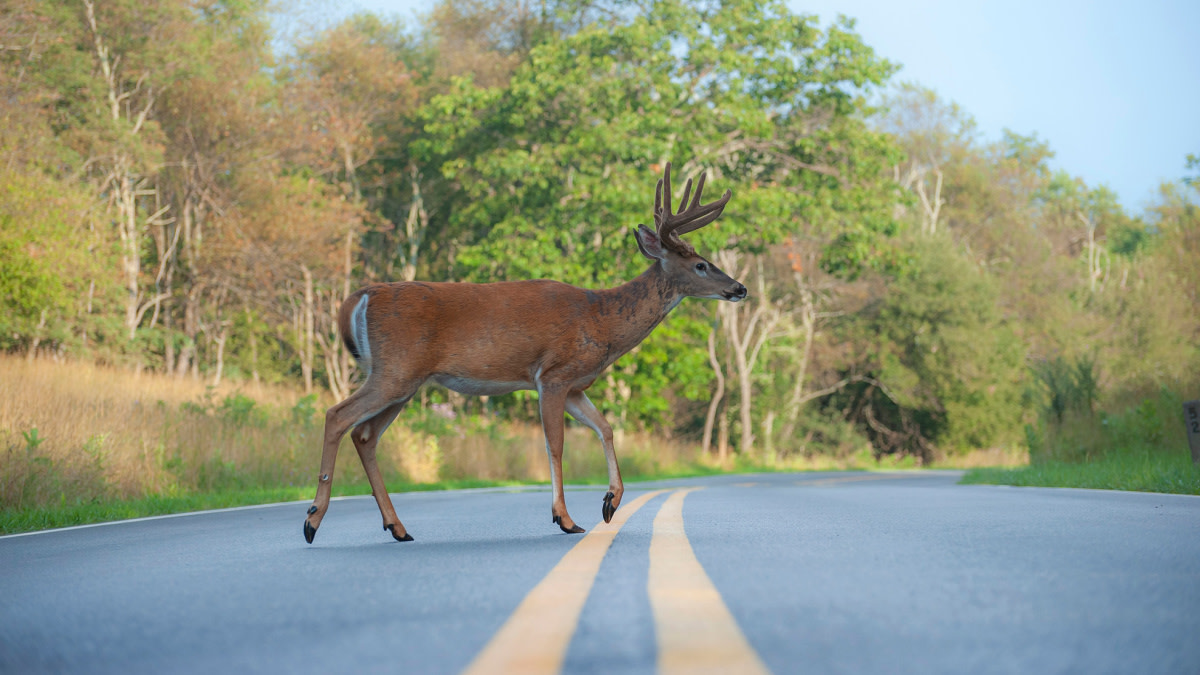What the Infrastructure Package Means for Hunters and Anglers

A group of Republican and Democratic Senators reached an agreement last week to advance a trillion-dollar legislative package aimed at restoring the country’s roads, bridges, waterways, and public lands. The “Bipartisan Infrastructure Investment and Jobs Act” has won support from several conservation groups, although some also call it a missed opportunity.
“This infrastructure legislation is potentially transformational,” said Chris Wood, president and CEO of Trout Unlimited. “It reflects the understanding—which TU has championed for years—that our landscapes and waterways are as much as fundamental part of the nation’s infrastructure as bridges and dams. And it directly tackles some of the biggest challenges to our infrastructure posed by climate change.”
The 2,702-page act revealed in text on Sunday includes several items of interest to hunters and anglers. It provides funding to remove obsolete dams and culverts, clean up abandoned mines, restore waterways, conserve water, reduce greenhouse gasses, and repair several hundred thousand miles of roads and trails managed by the U.S. Forest Service. The legislation will likely receive a vote on Thursday, Aug. 5, and is expected to pass the upper chamber of Congress with broad bipartisan support. It may face headwinds in the House of Representatives, but the sponsors are optimistic.
However, Trout Unlimited and other groups have decried the fact that this package fails to include Idaho Rep. Mike Simpson’s (R) proposal to remove the four dams on the Lower Snake River and invest in regional infrastructure alternatives in order to save struggling anadromous fish stocks.
“After more than 30 years and $17 billion in mitigation, policymakers have failed to prevent the continued steep decline of what was once one of the most prolific salmon and steelhead producing rivers on the West Coast and what could be the largest wild salmon and steelhead stronghold in the continental United States,” TU said in a press release. “TU, regional tribes, and other stakeholders have advocated strongly for congressional support of Rep. Simpson’s proposal, and the agreement’s complete lack of such support is a major disappointment. Numerous scientific studies affirm that the only way to recover Snake River salmon and steelhead is to remove the four dams.”
In fact, rather than support this plan to rescue salmon, and consequently the people and endangered killer whales that depend on them, Washington Sen. Maria Cantwell (D) introduced an amendment to rescue the federal agency that manages these destructive dams. Her amendment would double the amount of money the Bonneville Power Administration can borrow from the federal government, allowing another $10 billion for the agency to manage its deteriorating dams and wildly expensive and ineffective salmon restoration program. Chris Wood of TU called this amendment a “get-out-of-jail-free card.”
Still, conservationists are not ready to throw the baby out with the hydroelectric water. Numerous provisions in the legislative package address major priorities that would benefit fish and wildlife populations—and hunters and anglers by extension. Land Tawney, president and CEO of Backcountry Hunters & Anglers, told MeatEater about his thoughts on the act.
“We're super excited about the investments within the infrastructure bill that are being made on our public lands and waters,” he said. “What's good for our infrastructure should not only be good for the American people, but it should be good for our landscapes and good for wildlife as well.”
Tawney said he’s particularly enthused about the funding for abandoned mine reclamation. “You have half a million abandoned mines across the West and people continually fall into adits or we have a rain event and leaching happens. We need to invest in that. Within this budget there’s $11.3 billion for abandoned mine reclamation. We're super stoked about that.”
Reclaiming abandoned mines not only improves public safety on public lands and helps prevent pollution leaking into waterways, it can also create great wildlife habitat. A large portion of the Rocky Mountain Elk Foundation’s projects in Kentucky and nearby states have focused on cleaning up old coal mines to provide open, grazing habitat for elk and other wildlife. Elk were extirpated from that state around the Civil War and reintroduced with the help of RMEF in 1997. Now the Kentucky Department of Fish & Wildlife estimates there to be some 16,000 elk in the state.
Hunters and anglers across the country are likely to get excited about the U.S. Forest Service Legacy Roads and Trails Program, which would provide funding to repair, upgrade, (and sometimes remove) more than 375,000 miles of roads, 12,000 bridges, and 143,000 miles of trails on Forest Service ground. Both BHA and TU highlighted the need for fixing the public land infrastructure we have, while getting rid of what we don’t need. Poorly maintained roads and trails are linked to sedimentation and other adverse effects on trout, salmon, and other native fishes. Lower road density can also be a boon to ungulate populations.
Roads are possibly the single biggest focus of this infrastructure package, with $110 billion in dedicated funding. Along with that, some conservation groups hoped would be more money for mechanisms allowing wildlife to get over or under those roads without getting hit by vehicles—which frequently causes animal death, human injury, and property damage. The bill earmarks $350 million for a pilot program to study and increase this element of infrastructure related to improving highways, but those familiar with the problem of wildlife-related wrecks know it’s going to take a lot more cash.
“Could we use more money?” Tawney asked. “Absolutely. I think that's always going to be a conversation, but I also know that there's plenty of other priorities within this bill. I'm happy in a lot of ways that our public lands and wildlife are getting a fair shake.”
Feature image via Matt Hansen.






